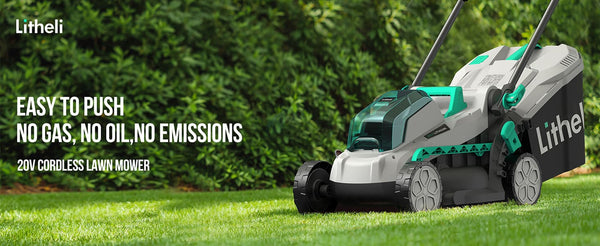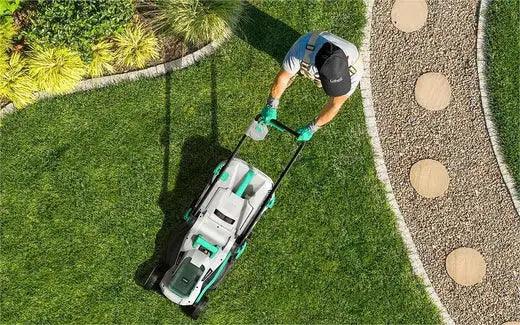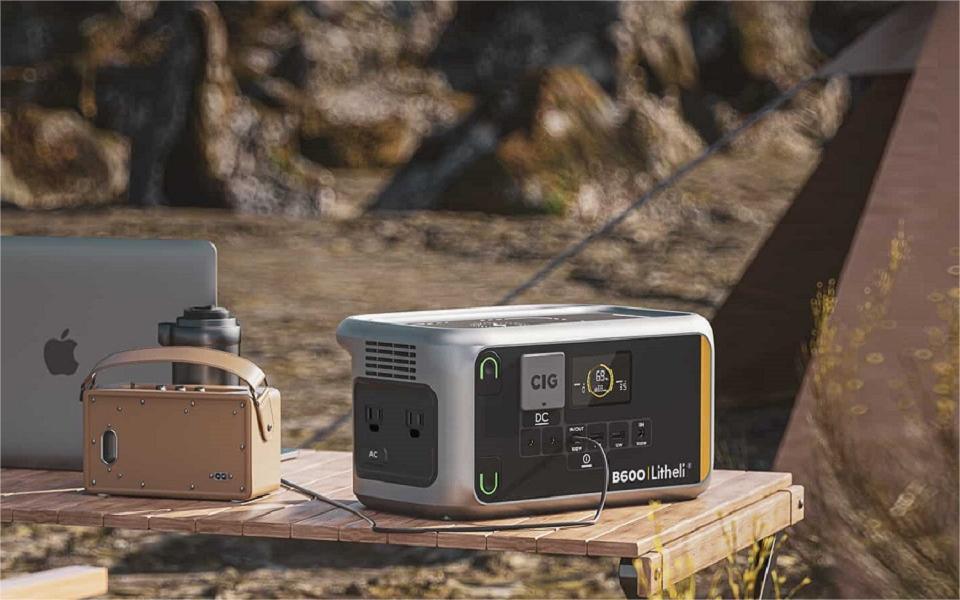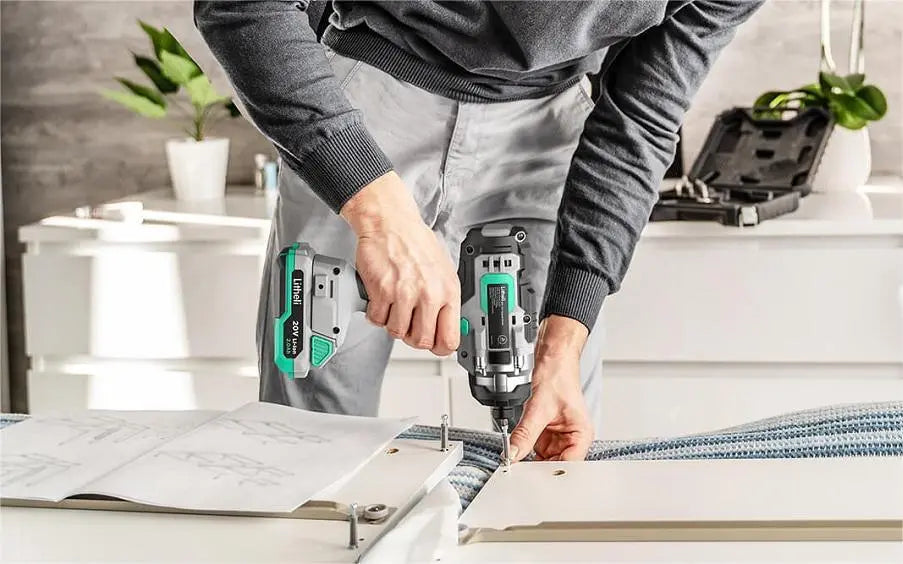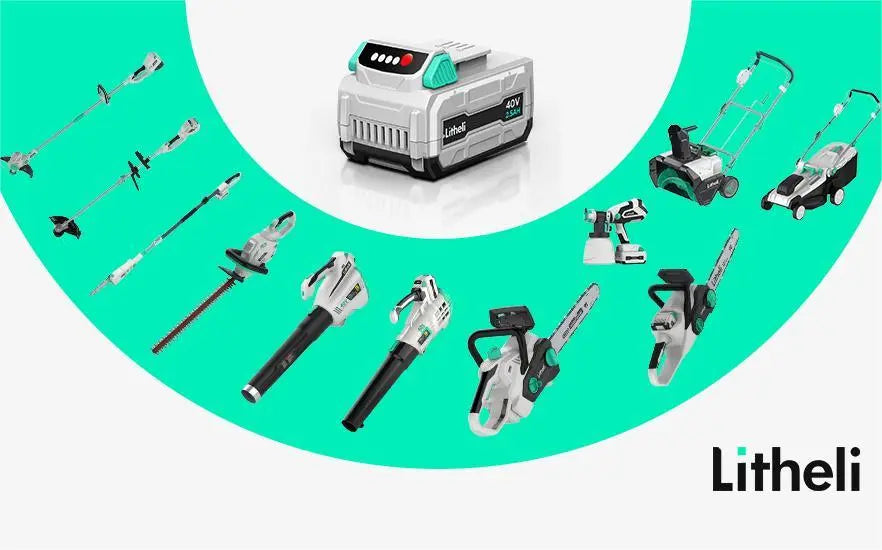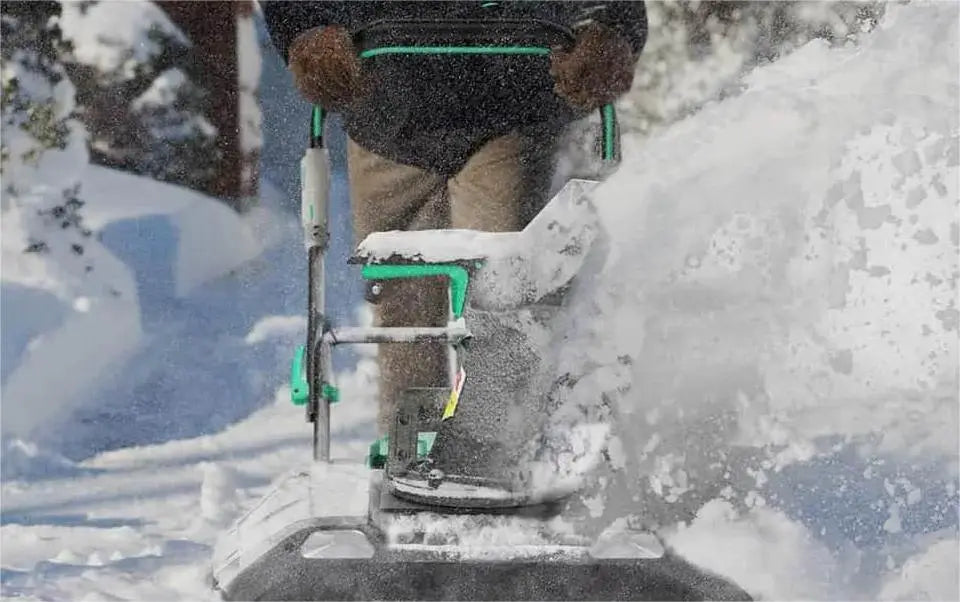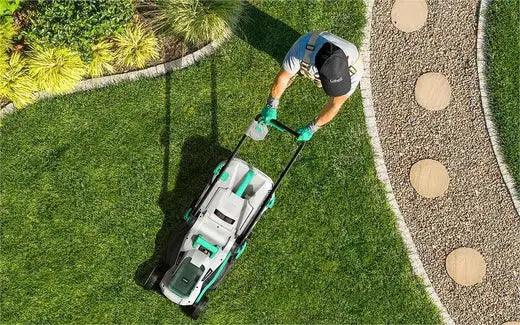
How To Sharpen Lawn Mower Blades & Lawn Mowing Tips
A well-maintained lawn mower is essential to keeping your lawn and home surroundings neat and tidy. However, like most home equipment, lawn mowers need regular maintenance to keep them in optimal working condition. Failure to maintain your lawn mowers will lead to dull blades, which can damage your grass and result in poor lawn care. That's why it's essential to regularly sharpen your lawn mower blades. In this article, we will go over how to sharpen lawn mower blades and some tips on how to mow a lawn so you can keep your mower running smoothly and your lawn looking its best.
Importance of Sharpening Lawn Mower Blades
There are numerous benefits to regularly sharpening your lawn mowers blade. The most obvious benefit is improving your mower’s cutting quality. A sharp blade will cut through your grass more evenly, giving your lawn a uniform appearance. A dull blade, on the other hand, will likely give your lawn a butchered look, leading to uneven growth and damaged grass long-term. A dull blade also cuts grass less efficiently, which can cause your lawn mower to consume more power than necessary and cause engine problems over time.
Regular maintenance can also increase lawn mower blade lifespan, as dull blades are prone to bending or chipping, rendering them irreparable. Over time, using worn blades can also expose your lawn to diseases due to torn or damaged grass.
How to Safely Remove Lawn Mower Blades
For lawn owners, knowing how to remove lawn mower blades safely is important. The process is not as easy as one might think, resulting in many people trying to clean their blades without detaching them from the mower first. While cleaning your blades without detaching them is possible, this is not the most effective method and may not completely remove all the built-up debris from the blades. If the blades aren’t adequately cleaned for an extended period, they will become dull and affect the health of your lawn.
Removing the Blade
Step 1: Make sure the mower is turned off
Before removing the blade, the first thing to do is shut off the engine if it is running and wait for it to cool down. Unplug the power cable, remove the batteries or drain the fuel depending on the mower’s power source.
Step 2: Tilt the mower
Once the mower is turned off and cooled down, tilt it on its side to expose the blade. Make sure the side with the air filter is facing upward.
Step 3: Secure the blade
Use a block of wood to keep the blade in place while you loosen the bolt or nut holding it. This will prevent the blade from moving and causing injury.
Step 4: Remove the blade
Use a socket wrench or adjustable wrench to loosen the bolt or nut holding the blade in place. Turn it counterclockwise to loosen it, then remove it by hand once it's loose enough. Be careful not to touch the sharp edges of the blade.
Once the blade is removed, you can then proceed to inspect and clean it.
How to Sharpen Your Lawn Mower Blades

Lawn mower blades are made to be very sharp; meaning accidents can happen if they aren’t handled properly. Hence, it's important to take safety measures before, during and after sharpening your blades. These include:
- Wear protective gear: Always wear eye protection, gloves, and hearing protection while sharpening lawn mower blades. Eye protection will protect your eyes from flying debris, gloves will protect your hands from the sharp edges of the blade, and hearing protection will protect your ears from the noise of the grinder.
- Disconnect the spark plug: Before sharpening the blades, disconnect the spark plug to prevent the lawn mower from accidentally starting while working on it.
- Secure the lawn mower: Secure the lawn mower in a stable position before you begin sharpening the blades. You can use a workbench or a set of sawhorses to keep the lawn mower in place.
- Follow the manufacturer's instructions: Follow the manufacturer's instructions for sharpening the blade, including the angle and direction of the sharpening strokes.
- Inspect the blade: Before sharpening the blade, inspect it for any cracks, chips, or other damage. If the blade is damaged, it should be replaced instead of sharpened.
- Keep the blade balanced: After sharpening the blade, ensure it is properly balanced. An unbalanced blade can cause vibrations that could damage the lawn mower or cause an accident.
- Be mindful of the direction of the blade: While sharpening the blade, be aware of the direction in which it is spinning. This will help you avoid any accidents caused by the blade suddenly spinning in the wrong direction.
- Use a vice: To hold the blade securely while sharpening it, use a vice. This will prevent the blade from slipping or moving while you are working on it.
- Clean up: After sharpening the blade, clean up any debris or filings left behind. This will prevent them from becoming a hazard to you or others who may be in the area.
Before you begin, it’s important you have all the necessary tools for sharpening lawn mower blades. Here’s what you’ll need to get started:
- Safety goggles: To protect your eyes from debris and sparks while sharpening the blade.
- Gloves: To protect your hands from sharp edges and prevent injuries.
- Rags and wire brush: To clean the blade before and after sharpening.
- Socket wrench: To remove the blade from the lawn mower and re-insert it after sharpening.
- Vice or clamp: To hold the blade in place while sharpening.
- Bench grinder: To sharpen the blade using a grinding wheel.
Sharpening the Blade
Step 1: Safety first
Put on your gloves, eye protection, and ear protection before you start working.
Step 2: Inspect the blade
Check for any cracks, chips, or other damage. If the blade is damaged, get a lawn mower blade replacement instead of sharpening the damaged one.
Step 3: Clean the blade
Use a wire brush to remove any debris or grass clippings from the blade. Wipe the blade clean with a rag.
Step 4: Sharpen the blade
Use a bench grinder or handheld grinder to sharpen the blade. Follow the manufacturer's instructions for the angle and direction of the sharpening strokes. Be sure to sharpen both ends of the blade evenly.
Step 5: Check the balance of the blade
Use a lawn mower blade balancer to check the balance of the blade. If the blade is not balanced, it can cause the lawn mower to vibrate and damage the engine. If the blade is not balanced, remove small amounts of metal from the heavier side until it is balanced.
Step 6: Reinstall the blade
Once the blade is sharpened and balanced, reinstall it onto the lawn mower. Make sure to tighten the nut securely.
Step 7: Test the lawn mower
Reconnect the plug or batteries and start the lawn mower. Test it in a safe area to make sure it is working properly.
How Often Should I Sharpen My Lawn Mower Blades
The frequency of blade sharpening depends on several factors, including the size of your lawn, the type of grass you have, and how frequently you use your mower. Generally, you should sharpen your lawn mower blades at least once a year or after 25 hours of mowing time. However, you may need to sharpen them more frequently if you have a large lawn or mow frequently.
Factors that may influence how often you need to sharpen your lawn mower blades include:
- Mowing frequency: The more often you mow your lawn, the more frequently you will need to sharpen your blades.
- Grass type: Some grass types are tougher than others and may dull blades more quickly. For example, Bermuda grass and St. Augustine grass are more difficult to cut than Kentucky bluegrass or fescue.
- Blade quality: The quality of your lawn mower blades will affect how long they stay sharp. Higher-quality blades may last longer and require less frequent sharpening.
Overall, it's essential to keep an eye on the condition of your lawn mower blades and sharpen them as needed to ensure a healthy and beautiful lawn. Or, if you feel sharpening the blade is time and effort consuming, you can also choose to replace it with a new Litheli 13" blade / Litheli 17" blade.
10 Lawn Mowing Tips
- Mow when the grass is dry: Mowing wet grass can cause clumping and uneven cuts, leading to a less attractive lawn.
- Adjust your mower height: The ideal mowing height depends on your grass type. As a general rule, keep your lawn mower blades high for shade-loving grasses and low for sun-loving grasses.
- Use the right mowing pattern: Vary your mowing pattern each time you mow to prevent grass from being pressed down and to encourage upright growth.
- Keep your blades sharp: Dull blades can tear grass, leading to a brown and frayed appearance. Sharpen blades at least once a year or more often if needed.
- Don't cut too much at once: Cutting more than one-third of the grass blade at once can stress the plant and weaken the roots.
- Leave grass clippings on the lawn: Grass clippings can add nutrients back into the soil, so consider leaving them on the lawn instead of bagging them.
- Water your lawn deeply and infrequently: Watering deeply and infrequently can encourage deep root growth and a healthier lawn.
- Mow frequently: How often should you mow your lawn? This is a very common question, and as a general rule, you should mow at least once a week, but some lawns may require trimming twice weekly.
- Avoid mowing in extreme heat: Mowing in extreme heat can stress the grass and cause brown patches. Try to mow early in the morning or late in the afternoon to avoid the hottest part of the day.
- Avoid newly sown areas: Freshly sown patches of lawn shouldn’t be mowed until they are at least 4CM long to prevent uneven lawn growth.
Choosing the Best Lawn Mower for Your Lawn
There is an endless list of lawn mower options on the market to choose from. However, your decision on the best one for you depends on several factors, like the size of your lawn, the terrain, and the power source. For optimal performance, we recommend our Litheli 20V Battery-Powered Lawn Mower and 2x20V Cordless Lawn Mower.
Why Choose a Litheli Lawn Mower?
Litheli is a leader in the power tools industry with appliances that run on clean energy. Our lawn mowers are lightweight, battery-powered, and easy to operate, giving you a convenient mowing experience. The Litheli 2x20V Lawn Mower weighs just 30Lbs which is lighter than the average lawn mower on the market, but it also comes with 17" ant-rust blades. It is powered by two Li-on batteries for double performance, making it perfect for heavy-duty mowing jobs.
Want something smaller but just as efficient? The Litheli 20V Battery Lawn Mower weighs 27.3Lbs with 13" blades and is ideal for trimming small lawns. Both mowers have an aerodynamic blade design that straightens the grass for even and healthy cuts. Their brushless motor also delivers up to 40% higher energy conversion efficiency than traditional brushed models and generates up to 4390rpm blade rotation with reduced noise and vibration.
Conclusion
Sharpening dull lawn mower blades is a critical task every lawn mower owner should undertake regularly. A dull blade makes your lawn look untidy and weakens your grass, making it more susceptible to diseases and pests. By following the steps and tips outlined in this article, you can ensure that your lawn mower blades are sharp and in good condition, which will help you achieve a healthy and beautiful lawn. For best results, we recommend using our Litheli lawn mowers; visit our website today to learn more and purchase the right lawn mower.






